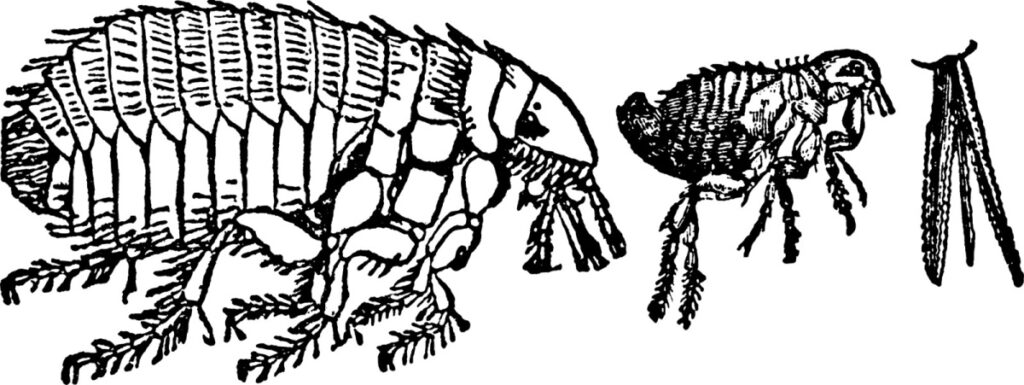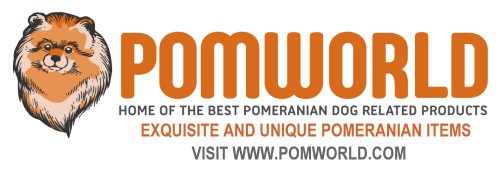Last Updated on 25/04/2024 by Dochlaggie. Post first published on July 8, 2016.
The majority of Pomeranians and other dog breeds will have fleas one or more times during the course of their lives. Even if you have no idea how your dog got fleas, you should remember it’s a possible reason why your pet scratches so much.
Your dog may get fleas while playing in a dog park, visiting your local pet store and many other possibilities due to the fact that a flea has the ability to jump up to six feet at a time and they can also jump from dog to dog.
Symptoms of fleas
Scratching
Fleas are incredibly small but when they bite, it can cause your dog to be intensely itchy. Many dogs have an allergy to the saliva of the fleas so when it touches your dog’s skin, as he enjoys a blood feast, the intensity of the itchiness increases immensely.

Your Pom will try to scratch all areas that feel itchy. He’ll use his paws where possible but in some cases he’ll rub himself against the floor, a wall, bedding or other places, to stop that annoying sensation. If his paws itch, he’ll chew them to stop the itchy sensation.
Coat loss and/or intensely itchy skin
Fleas reproduce extremely fast. This means that if your Pom has a few fleas to start with, he’ll quickly become infested with them.
If he’s allergic, one bite may create such a deep itchy sensation that he’ll gnaw at the affected area, causing some loss of fur as he tries to burrow deep down. His paws are the most common place for fleas to congregate.
Dark, miniscule specks
While fleas jump, they don’t have wings and, therefore, don’t have the ability to fly. This means you’ll never see swarms of fleas circling your poor Pomeranian pet.
Have a very close look at parts of your pet’s body where he can’t scratch (for example, the back and tail) and you’ll notice the tiniest of black or brown dots that resemble finely ground pepper specks.
Wipe some of them off with a white paper towel that you have moistened. Then fold it and squeeze and you’ll usually see little speckles of blood.
Fleas are nearly impossible to kill
Fleas are incredibly resilient and almost impossible to eradicate completely. They prefer a moist, temperate climate but may go dormant for as long as a year, until ideal conditions for reproduction and survival exist once more.
In their dormant state, they can be inside or outside, in wall and floor joints, carpet, bedding, furniture, indoor plants, yards and gardens.
Your car isn’t safe from being infested either. If your Pomeranian has fleas and spends time in your car, some may go dormant by jumping off his body and hiding in the car.
He may have anywhere from 100 to 4000 fleas on his coat at any time.
Fleas have four life cycles which means your pet Pom hosts a thriving flea civilisation and most of the fleas won’t be noticed by you as the owner.
A Pom’s fleas will exist in one of four cycles
- Adults that take their food from your Pom’s blood and these are responsible for most of the itchy sensations.
- Eggs. One female flea can lay anything up to 50 eggs each day, but the majority fall from the dog’s body and settle into carpets, bedding and other similar places.
- Larvae. Larvae emerge from the eggs when hatched. At a point between 5-20 days, they start spinning miniscule cocoons.
- Pupae. When fleas are in the cocoons, they’re called Pupae. They may be in the cocoons for day days up until one whole year, and they only come out as mature fleas once the ideal conditions exist. If you see ONE flea, there will be at least another 100 in their various developmental stages.
How do you eliminate fleas?
Talk to your veterinarian for the best method of attacking any flea problems. Ask for advice on a product that will kill all the fleas on your beloved Pomeranian in their four cycles, and also advice on protecting other pets you may own.
If your Pomeranian and other pets are treated with one of the modern flea insecticide treatments, the fleas in your home and garden will eventually die. Unfortunately, the flea can live for up to six months without feeding from a host animal.
Your vet may suggest that you bomb your home. This will send a light mist into corners and crevices where normal cleaning efforts can’t reach.
Select a product that protects your home for six months once used and also ensure it’s a product that is completely dry within an hour.
If you decide to use a pest exterminator, ask questions first. What chemicals will they be using? What effects can such chemicals have on your pets? Always verify credentials and claims of the company you plan to utilise.
Kill fleas in the car and garden
You have numerous options if you’re willing to do this yourself. You may opt for paying a professional to carry out the job instead.
Choose from among the non-toxic options because they’re much safer than ordinary pesticides. For example, Diatomaceous Earth dries out the areas so fleas leave because it’s not a place in which they can survive.
This is a food grade quality and this means it’s supposedly safe for animal and human consumption, while killing fleas and certain other worms.
It also means your dog can go outside and play without risking his health. Choose your Pomeranian’s protection wisely. Despite using any flea destruction method, fleas can still infest dogs sometimes.
Choose the best products to keep your beloved pet safe. Monitor your pet’s reactions to products as dogs may have unpleasant reactions to specific preventatives.
Fleas are an essential part of the reproduction and life cycle of certain worms so ensure that, apart from the flea treatment, your Pomeranian and all other pets will require worming.
Please note: while I do discuss health, care, and behavioral issues, you should never use this information as a replacement for advice from qualified veterinarians, diagnoses, or recommended treatment regimes. If you have any worries about the health of your Pomeranian, your first contact should be your regular vet or, if you don’t yet have one, a vet that works locally. Never ignore or avoid treatment and advice from your vet because of a piece of information you have read on any website.
Copyright Pomeranian.Org. All Rights Reserved.
References and Further Reading:
[1] Denise Leo “The Pomeranian Handbook”.








